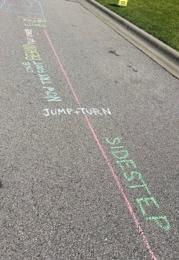Behavioral Management Strategies
- All Care Therapies

- May 8, 2022
- 2 min read

Managing your child’s behaviors at home is an integral component for developing effective self-regulation, social interactions, and cooperation that will affect them throughout the course of their lifespan. These lessons impact their life across a variety of different contexts including school, community, and extracurricular activities. Continue reading for strategies to help manage challenging behaviors in the home.
1. Behavioral Modeling
According to Social Learning Theory (Bandura, 1977), people learn through observation, modelling, and imitating behaviors, attitudes, and emotional reactions of others. Modeling and practicing positive behaviors throughout your life with your child teaches them appropriate responses. An example of this may include modelling appropriate ways to calm down. For instance, you could say “Mom is very frustrated right now, I need to take some deep breaths to calm down.” By observing these behaviors, your child they may imitate and practice them as they grow and develop.
2. Recognizing the Reason
Taking the time to ask your child what they might need amid a meltdown rather than assuming they are acting out for no reason helps you better address their needs and helps your child learn about their emotions. Giving children the grace and patience to learn how to manage their emotions enables them to develop healthy coping habits. Additionally, studies show that low emotion identification skills relate to poor emotional regulation strategies and higher rates of anxiety and depression (Ciarrochi et al., 2008)
3. Setting Expectations
In order to prepare and reduce challenging behaviors, setting expectations prior to the event has been shown to be an effective strategy. For example, before going to the grocery story you might say “I expect you to stay with me while we are shopping.” Furthermore, you might add positive reinforcement or a reward if they maintain this expectation throughout the event. This might include a toy or food of their choice in the grocery store.
References:
Bandura, A. (1977). Social learning theory. Englewood Cliffs, N.J: Prentice Hall.
Ciarrochi, J., Heaven, P. C. L., & Supavadeeprasit, S. (2008). The link between emotion identification skills and socio-emotional functioning in early adolescence: A 1-year longitudinal study. Journal of Adolescence, 31(5), 565–582. https://doi.org/10.1016/j.adolescence.2007.10.004




Comments